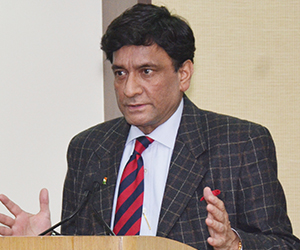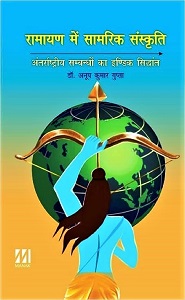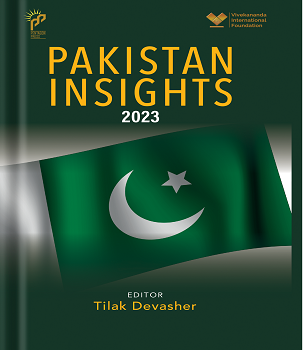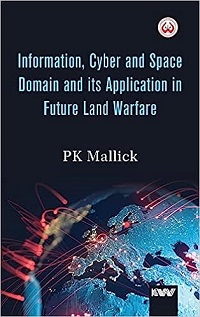Fountainhead of Jihad is one among the more important books on the nature of Jihad and Islamic extremism in recent times. There have been several in this genre, as interest quickens around the world on this subject. In the South Asian context, it is also important in order to try and understand what might follow the withdrawal of foreign forces in Afghanistan. This book is about the Haqqani network, and the title of the book is based on the magazine of the network called Manba al-Jihad which means exactly what the title of the book says. The Haqqani network has been much in the news recently, and was described in September 2011 by the-then US Chairman, Joint Chiefs of Staff Mullen as a “veritable arm” of the Pakistan Inter Services Intelligence Directorate. This network is the fountainhead of Jihad.
What strikes the reader almost immediately is that there are none of the soothing bromides that many apologists offer about the so-called “true” nature of Jihad: the book takes it as a given that Jihad is war and violence. The Haqqani network is among the oldest in this line, but has preferred to keep a low profile – and did so at least until the public remarks made by Admiral Mullen.
The three major conclusions the book offers are worth summarising in some detail. First, it reveals that the first call to Jihad was made by Haqqani pere – Jalaluddin – as far back as 1973 against President Mohammed Daoud of Afghanistan. The latter had removed his cousin and King, Zahir Shah, in a bloodless coup, and was pushing Afghan society towards greater equality for women, and was taking on the religious establishment on both sides of the Durand Line.
This is important because it reveals that Jihad against Afghanistan began well before either the advent of the Peoples Democratic Party to power in Kabul in 1978, or the Soviet invasion in 1979, contrary to the standard narrative which would have us believe that the Jihad started as a response to the Soviet invasion.
The second important insight it offers is that of the nature of the Jihadi groups in Pakistan and the border areas. At one end of the spectrum of such groups is the Quetta Shura, headed by Mullah Omar, who is also the accepted Amir-ul-Momineen – the leader of the faithful. This group is loyal to Pakistan, and does not attack any State establishments; it also asks its followers likewise not to attack the State. Next comes the Haqqani network itself, which recognises the Amir, and offers allegiance to him – at least in words. This last is said because at the other end, it is also very close to [the book calls them the enablers for] the activities of al-Qaeda, which is willing to attack Pakistani interests as it sees the Pakistani State colluding with the US to fight groups like itself. Finally, at the other end of the spectrum, in terms of being hostile to the Pakistani State, is the Tehreek-e-Taliban Pakistan [TTP], with which, too, the Haqqani network maintains good working relations. At another level, the Haqqani network smoothed the passage of the Arab groups into Afghanistan through the 1980’s and beyond, and thus also abetted the spread of Salafi ideology in the AfPak region – and this is emerging as one of the serious causes of worry among even sections of the traditionalist Islamic establishment in the subcontinent.
From the Indian perspective, it is worth noting that groups like the Lashkar-e-Taiba, whose primary target is India, also work closely with the network, and the two were together responsible for the attack on the Indian Embassy in Kabul in 2008 in which the Defence Attaché and a Counsellor were killed. As we know, the ISI was directly involved in this attack.
The third major conclusion that the book offers is that the Haqqani network is also very active against India. The attack on the Indian Embassy in Kabul has already been referred to. Equally, the network has been, and continues to, train the tanzeems active in Jammu & Kashmir and other parts of India. According to the authors, the ISI asked them to take up this task, and they obliged, thus becoming the “strategic asset” that the Pakistan army describes them as. It quotes Jalaluddin as telling a religious gathering in Karachi in the early 1990’s: “We have trained thousands of Kashmiri mujahideen, and have made them ready for Jihad”. Interestingly, the book also tells us that when Pakistan was conscripting tribals from its Pashtun areas in 1947 for the invasion of Kashmir, the Afghan ulema had issued a fatwa denying that there was any need for a Jihad in, or against, India.
Considering all this, it is surprising that the US designated this group a Foreign Terrorist Organisation only as late as September 2012, a year after it had been publicly denounced by Admiral Mullen. The authors suggest that the network has shown political acumen over the decades, knowing where the red lines of the different organisations were, especially of the ISI and the Quetta Shura.
This book is very helpful in understanding the true nature of the Jihad that faces not just Afghanistan after 2014 and India, but also the broader framework in which the Jihad is being conducted by a spectrum of groups, all of which have mutually reinforcing agenda, though their geographic focus is different. The Haqqani network is primarily focussing on Afghanistan, though with increasing involvement in India too. The TTP is targeting Pakistan, and Al-Qaeda has a global reach. And, of course, overarching this entire complex is the ISI. The TTP remains out of control because it has bases in Afghanistan, but that is part of the uneasy dynamic of the terrorist campaign that all sides are playing in the AfPak region.
The book is also very useful as a summary of the history and spread of Jihadi ideology in Pakistan. It provides a healthy antidote to the emerging narrative, particularly in India, about Pakistan having had enough, and being ready to turn away from extremism and rejecting Jihad. The reality is far from this, and the authors themselves are pessimistic about the future of any peace process. They point out that the nature of the Haqqani network is such that any peace settlement is unlikely to last – as shown by the several “peace settlements” made by the Pakistan army too, earlier in the mid-2000’s. They also provide a rebuttal to the view that it is the US presence that is fuelling the Jihadi campaign. They make the entirely valid point that Al-Qaeda spread its ambition and ideology in the late 1990’s - well after the Soviets had been defeated in Afghanistan and – by implication - there was no need for another Jihad.
For India, there is a stark warning, adding to the considerable body of intelligence already available in the public domain regarding trouble to come in 2014 and beyond:
Many Jihadis in the region will be emboldened by the US drawdown and eventual departure from Afghanistan, viewing the event as a victory in their quest to reclaim Muslim lands and rid those areas of Western influence. ... If history is any guide, many of the Jihadi groups active in the region will turn their sights to Kashmir, or support those that do, to reclaim Indian-occupied Kashmir from perceived Hindu dominance.
All of these insights make this a useful book for those concerned with national security issues. It serves as a timely reminder of the harsh reality of the Jihadi networks in our region and of the fact that India is one of their priority targets.











Post new comment